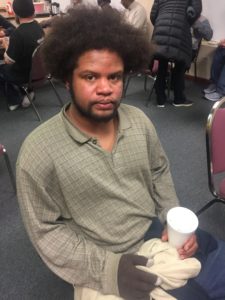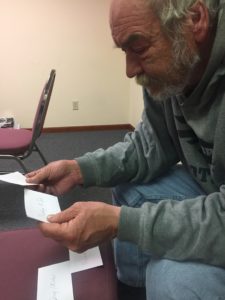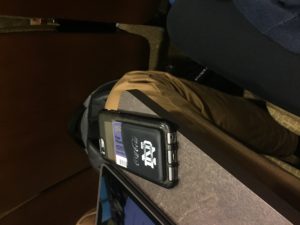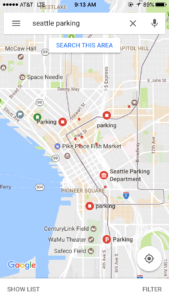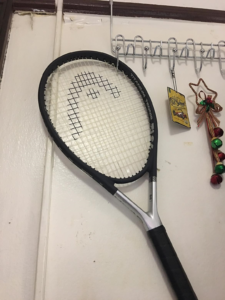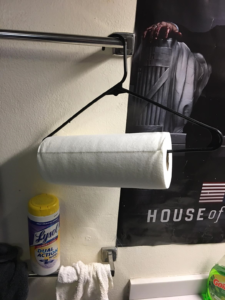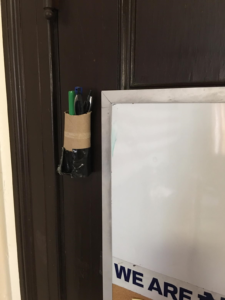Our Team has developed 3 different services that will help the homeless people find their way out of homelessness. While these may be rough ideas for now, we are quite confident on the need to focus on our second guiding principle of reminding them what a good day is. We decided this based on satisfying the second tier of the hierarchy of needs which may help them realize that they need to help themselves and use some resources that are available to get out of homelessness. There is also the importance that they need to some structure for their day and to not have too much free time.
Idea 1- A Man’s Best Friend
We had the idea that we could partner with the humane society or another animal shelter program similar to that to volunteer an hour or too and just let the homeless people hangout with. We thought that this was a good idea because there are so many studies done on how dogs and other animals can really bring up the morale and help with depression.
Entice- Homeless people will be enticed to use this service because it is simply something that they can do throughout the day with their free time. Possibly if they once have had a pet, they may want to hang out with one or they may simply be an animal lover, it is quite hard to refuse hanging out with a puppy.
Enter- One of the main things that we will have to combat is people using the service. Hopefully there will be a building close to downtown where this can happen but if not, there is the possibility that we can bring the animals too them via van or car.
Engage- The user will simply interact with these dogs as little or as much as they would like. There will be a volunteer watching over the interactions so no dogs are stolen in the process.
Exit- The user will stop using the product completely once they decide that they need to get their life back together and start using resources to do so. The user just may also not want to hangout with the dogs anymore, hopefully the former.
Extend- In the short-term, hopefully these dogs make such an impact on someone that they cannot go a week without seeing them. In the long-term, hopefully this news reaches others and they see the impact that dogs can have and they hopefully use the service as well.
Idea 2- Coach Holtz, For Your Life
The second idea that we came up with was simply a life coach but with a little twist. Rather than have a mandatory counselor with set meeting times and standard questions etc, we were thinking that this person could be more of a friend. We found that in order for the homeless to open up, they just need someone to be friendly. I’m thinking of this person more as a best friend then a counselor, and we think that will be very effective.
Entice- The user will want to use this service because they may just want a friend. If not we can have a counselor seek out people to simply talk with.
Enter- The user will enter once they are comfortable talking to the counselor and want to meet with him, rather than being forced to meet with him. We thought that this was an important note because once people are forced to do things, they are often more closed to the process.
Engage- By setting up meetings themselves, the user will hopefully then realize that they will want to get their life back on track. This counselor will have the available tools and resources to do so.
Exit- The user will exit the process once they have been fully entered into the recovery stage. They will still keep contact with the counselor, as they are a good friend, but the meetings will not be as often.
Entice- The once homeless person will be a great way to spread the word. We think that the importance of keeping this voluntary and informal is crucial to the success, so not advertising much is crucial.
Idea 3- Work Out till You Break Out
Our third idea is based off of the proven benefits of exercise and helping with depression. Depression and other mental illnesses is a major problem with many of these homeless people, so we decided to take one of the best proven and cheapest cures for these illnesses and bring it to them. At first is may be difficult to get them to engage, but once they do we think that they won’t be able to stop. We will bring fun ways to exercise to these shelters and show the homeless that they can be fit too, hopefully ending with a new vigor to change their life.
Entice- The user will be enticed to start with the exercise program because it will be another thing to fill up their day. They will choose this over drugs because we may be able to create a group effect of people that want to do it, then people will follow.
Enter- The user will enter once they see all of the other people are involved. Whether it is a van full of people going to an open gym or just people in the shelter working out before they sleep, this stage will involve others joining the process.
Engage- The user will being working on those abs! But actually simply working out and being a repeat customer to the service.
Exit- The user will exit once they are able to join a gym themselves. They can even stay in the program and help entice other homeless to start exercising again.
Extend- As in the exit stage, we can have others try to entice other homeless or other user will see the success of a few and want to join.
![]()

